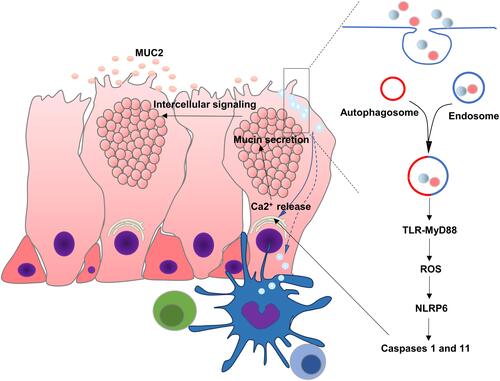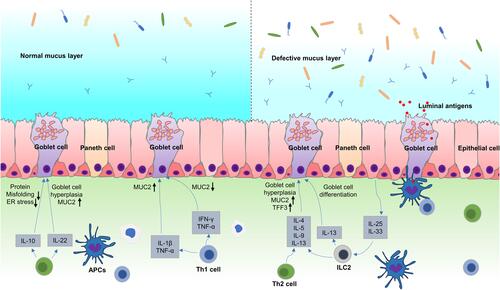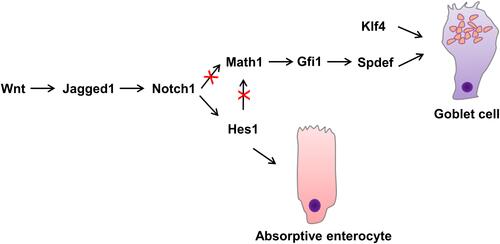Figures & data
Table 1 The Classification of Mucins
Figure 3 Regulatory mechanism of mucus secretion in goblet cell and interaction with immune cells. Soluble antigens in the lumen of the intestine such as LPS and P3CSK4 are endocytosed by senGC, triggering TLR-MyD88 signaling, ROS synthesis and NLRP6 inflammasome, causing Ca2+-dependent secretion of MUC2. Goblet cells can also deliver luminal antigens to APCs, initiating adaptive responses.

Figure 4 Immune regulation of goblet cell function and mucin production. (1) IL-33 and IL-25 activate ILC2 and Th2 cells during parasite infections, which release Th2 cytokines such as IL-4, IL-5, IL-9, and IL-13. IL-4 and IL-13 can promote goblet cell proliferation through STAT6 signaling. IL-4 and IL-13 also upregulate the expression of TFF3 and MUC2 via STAT6 or MAPK signaling. IL-25 and IL-9 also promoted goblet cell proliferation and mucin expression through IL-13 dependent pathway. IL-33 induces goblet cell differentiation by stimulating ILCs to produce IL-13. (2) Th1 cytokines such as TNF-α, IL-1β and IFN-γ play complex way in regulating mucin biosynthesis, which not only induce, but also inhibit MUC2 expression in different pathophysiological conditions. (3) IL-22 can regulate goblet cell differentiation and induces mucin expression in STAT3 signaling. IL-10 promotes mucin expression by inhibiting protein misfolding and ER stress in goblet cells.


